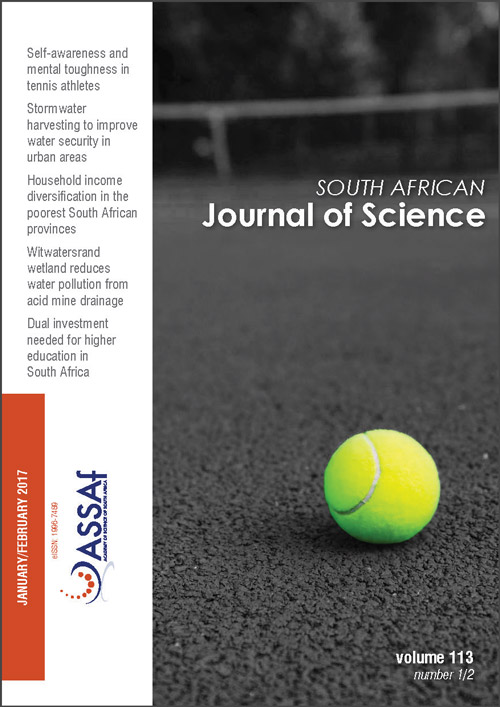Estimation of household income diversification in South Africa: A case study of three provinces
DOI:
https://doi.org/10.17159/sajs.2017/20160073Keywords:
income diversification, livelihood diversification, poverty, unemployment, inequalityAbstract
We estimated household income diversification in settlement types of the poorest provinces in South Africa – the Eastern Cape, Limpopo and KwaZulu-Natal. We obtained data from the 2010/2011 Income and Expenditure Survey from Statistics South Africa and Wave 3 data from the National Income Dynamics Study. We used the number of income sources, the number of income earners and the Shannon Diversity Index to estimate income diversification in the study provinces. The results show that households in the traditional and urban formal areas diversified income sources to a greater extent than households in urban informal and rural formal settlements. The varied degrees of income diversification in the three provinces suggest that targeted policy initiatives aimed at enhancing household income are important in these provinces.
Significance:- Indices yet to be used in South Africa were used in the analysis of StatsSA data to understand income diversification.
- Poverty is mostly concentrated in the traditional areas and urban informal areas.
- Households in the traditional areas and urban informal areas derive livelihood mostly from social transfers and remittances, whereas those in the urban formal areas derive income from business, labour income and financial capital returns.
Published
Issue
Section
License

All articles are published under a Creative Commons Attribution 4.0 International Licence
Copyright is retained by the authors. Readers are welcome to reproduce, share and adapt the content without permission provided the source is attributed.
Disclaimer: The publisher and editors accept no responsibility for statements made by the authors
How to Cite
- Abstract 913
- PDF 1206
- EPUB 220
- XML 239












.png)